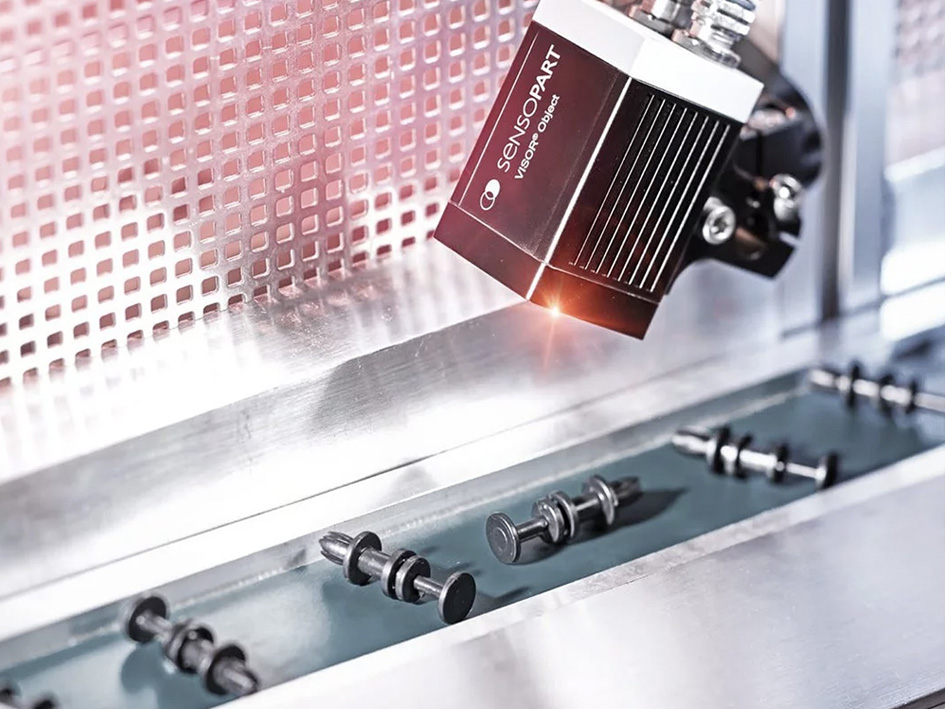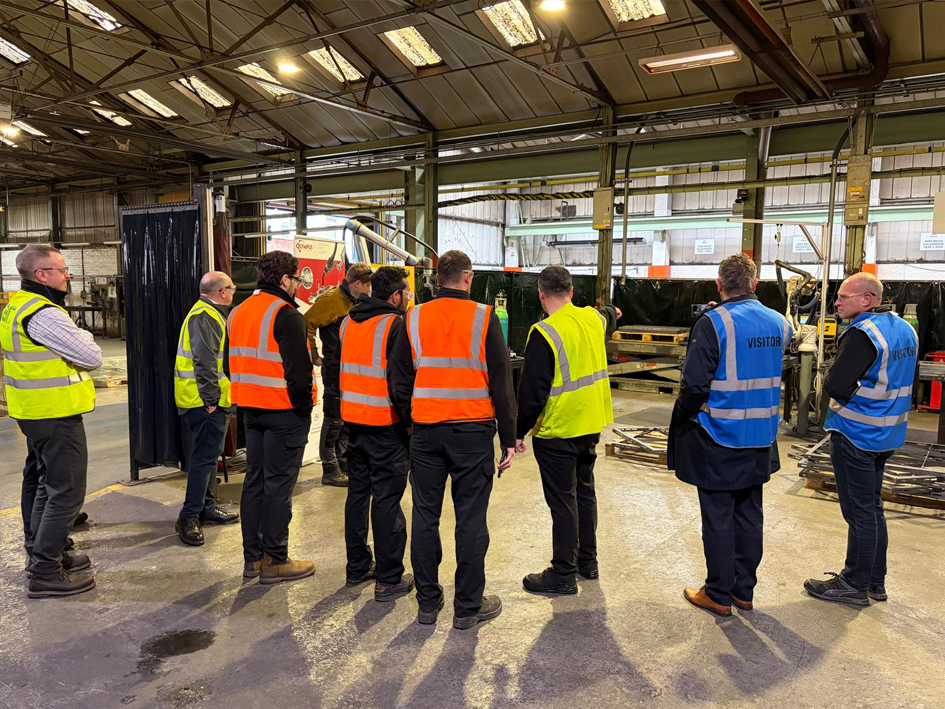Why OEE Matters in Manufacturing
Overall equipment effectiveness (OEE) is the clearest metric to see how well your equipment is running.
It blends three measures, availability, performance, and quality, into one value that highlights where time is lost and where gains can be produced.
With real-time OEE solutions, teams get instant insights into cycle variance, stops, scrap, and updates that operators can act on.
Olympus’ collaborative robots (cobots) stabilise cycle time, reduce manual variability, and keep lines running between tasks like welding, machine tending, and palletising. When paired with OEE dashboards, cobots make losses visible in-the-moment and easier to eliminate.
Speak to Olympus about OEE and cobot solutions that unlock real-time performance insights.
The Three Pillars of OEE and How They Drive Results
Availability
Measures how much time the machine is actually running versus planned time. It accounts for breakdowns, changeovers, and shortages. Improving availability cuts downtime and makes better use of every shift. Quick-change tooling and safe hand-guided teaching shorten changeovers; cobot machine tending keeps spindles cutting while operators manage multiple cells.
Performance
Shows whether the line runs at its designed rate. Slow cycles and micro stops pull this figure down. Targeted fixes, from parameter tweaks to operator prompts, help recover lost speed and increase output. Cobots deliver consistent cycle times, reduce micro-stops from manual handling, and maintain steady travel speeds in welding, lifting effective rate without pushing beyond safe limits.
Quality
Captures the proportion of good parts made. Fewer defects mean less rework and waste, raising first-pass yield and freeing capacity. Improvements across availability, performance, and quality lead to higher productivity, lower operating costs, and stronger ROI. Repeatable paths and process parameters (e.g., torch angle, bead placement, clamp sequence) reduce variation and rework, feeding cleaner quality signals back into your OEE system.
| OEE Component | Definition | Formula | Example Cobot Impact |
|---|---|---|---|
| Availability | Run time vs. planned time | Run Time / Planned Time | Cobot tending slashes changeover by 30%, adding 40 min run time per shift |
| Performance | Actual rate vs. design rate | (Ideal Cycle × Total Count) / Run Time | Cobot welding removes micro-stops, recovering 6% speed loss |
| Quality | Good parts vs. total parts | Good Count / Total Count | Stable torch path improves FPY from 92% → 98% |
Implementing Real-Time Data Capture for OEE
Accurate, timely data is essential for trustworthy OEE in manufacturing. Platforms such as Ignition, MES layers, and Vorne scoreboards feed operators and supervisors with immediate feedback, alerts, and context. The benefits are practical and quick to realise.
Start by detecting cycle time variance quickly, before it cascades into missed targets. Spot early signs of equipment failure using trend analysis, condition updates, and reason codes. Enable continuous process optimisation by comparing shifts, products, and cells within the plant.
Olympus cobots integrate with PLCs, MES, and OEE scoreboards to push state changes (e.g., part present, weld complete, tip life) as structured signals, turning every cycle into clean, usable data.
Strategies for Standardising OEE Data
Inconsistent data leads to noisy analysis and slow reactions. Standardising the data model and controls pays back with clearer decisions across operations and sites. Olympus integrates automation and controls so your OEE system is consistent and comparable.
- Use centralised, protocol-driven connectivity (e.g., OPC UA) to unify inputs across machines and locations.
- Apply standard PLC tags and HMI layouts so operators understand states and stop reasons quickly and simply.
- Define a common taxonomy for downtime and defects to enable like-for-like comparisons across the industry.
Get expert guidance on data standardisation for OEE and cobot cells.
Best Practices to Maximise OEE with Dashboards
Good dashboards prompt action without clutter and help teams focus on the key losses. Use a clear visual hierarchy for availability, performance, and quality, with colour, trends, and audible alerts to surface issues as they occur. Create role-based views so operators see prompts, maintenance sees MTBF and MTTR, and managers see line and plant trends.
Add industry-specific KPIs where useful, including changeover time, first-pass yield, and scrap cost. Tie every card to a named owner and due date so improvements use the same playbook. Continuous monitoring shortens response time and lifts performance within the shift.
Include cobot cell OEE tiles with live status, program/variant ID, and assist prompts (e.g., “Replace tip in 15 mins”, “Refill wire”). These pre-empt speed loss and quality drift.
Common Challenges in Improving Equipment Efficiency, and How OEE Helps
Unplanned downtime
Breakdowns, missing materials, or manual errors stall production. OEE pinpoints where and when stops happen so maintenance and logistics can identify and fix root causes. Light-touch redeployment keeps capacity online during bottlenecks or maintenance.
Inconsistent preventive maintenance
Without a plan, small issues become failures. Pair OEE with predictive maintenance to schedule interventions based on data, condition, and usage. Track arc-on time, gripper cycles, and spindle load to trigger timely consumable changes.
Limited visibility of true losses
Speed loss and micro-stops hide in averages. OEE insights reveal these hidden losses so you can recover rate and throughput and increase value produced. Programmed dwell times and path stability expose “creep” in manual steps and hold the target cycle.
Learn how Olympus helps manufacturers cut downtime with automation, cobots, and OEE monitoring.
Where OEE Meets Welding and Fabrication
For welding and mixed-model fabrication, OEE highlights different constraints across jobs. In welding cells, performance often drops through parameter drift or consumable wear, so alerts for tip changes based on arc time keep quality high and the cycle steady. Automated and cobot welding systems stabilise travel speed and path accuracy, improving first-pass yield, reducing stops for rework, and feeding clean signals back to the OEE system.
Beyond welding: Cobot palletising reduces end-of-line bottlenecks; cobot machine tending keeps CNCs cutting; small-footprint cobots fit where traditional automation can’t, lifting OEE without major layout changes.
Quick Start Plan to Improve OEE
- Baseline current availability, performance, and quality by line and product.
- Standardise stop reasons, speed targets, and quality definitions so everyone uses the same features and terms.
- Instrument critical machines with real-time OEE capture, clear dashboards, and your logo for easy adoption.
- Act daily on the top three losses, with owners, due dates, and live updates to show progress.
- Sustain through tiered meetings, visual controls, and weekly reviews of MTBF, MTTR, and first-pass yield.
- Automate repeatable tasks or changeovers that create chronic loss e.g., use cobot welding to stabilise cycle time and quality, or cobot tending to keep machines loaded during breaks.
Conclusion: OEE as a Path to Long-Term Manufacturing Success
OEE turns data into decisions that lift availability, restore performance, and protect quality. With real-time visibility, standardised models, and focused dashboards, teams make faster calls, reduce downtime, and increase throughput. Combine OEE with predictive maintenance and targeted cobot automation, and the gains compound quickly.
Olympus Technologies partners with manufacturers to deploy OEE solutions, integrate controls, and automate production, from cobot welding cells to final assembly. The outcome is more value produced in the same time, with fewer losses and lower cost per part; not a chase for “100” on every screen but a drive for the best results the plant can achieve.
Book a consultation to implement OEE and maximise your equipment efficiency with Olympus, ask about our cobot welding, palletising, and machine tending cells. (olympustechnologies.co.uk)














